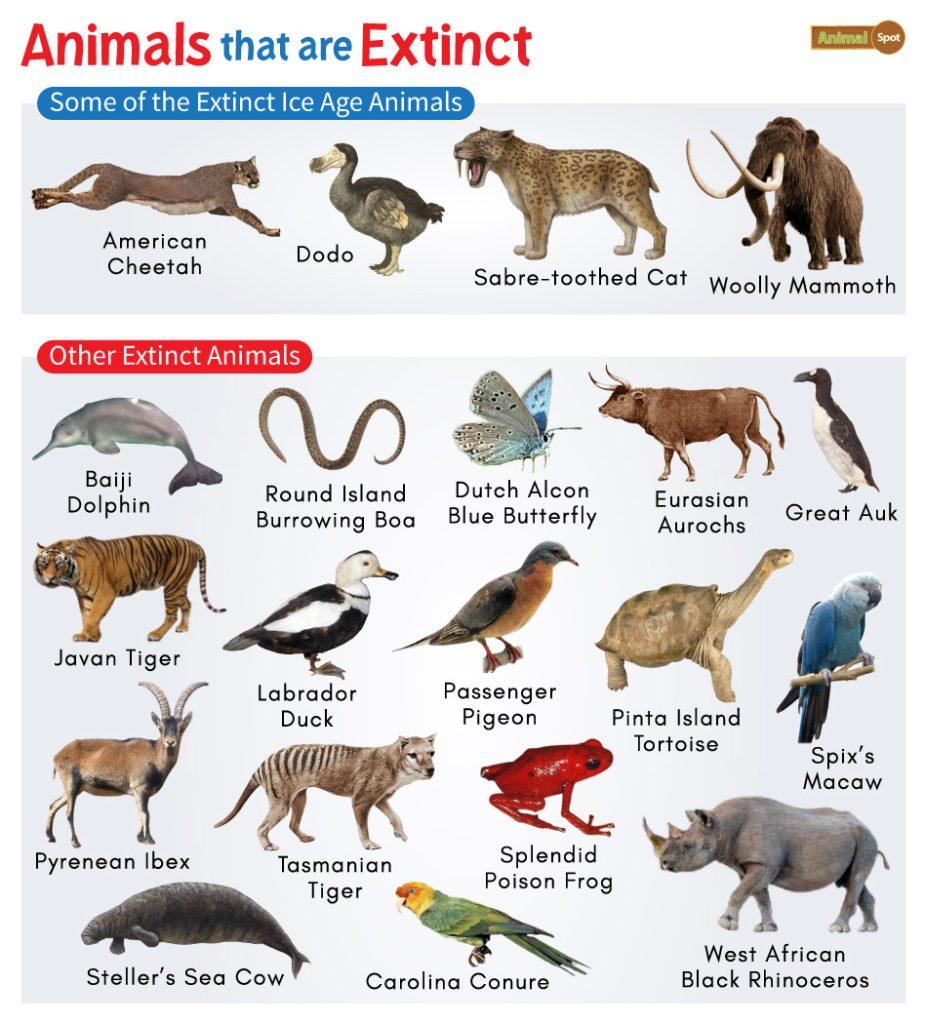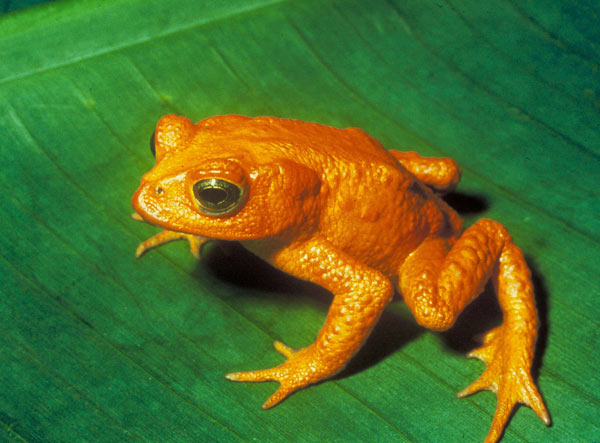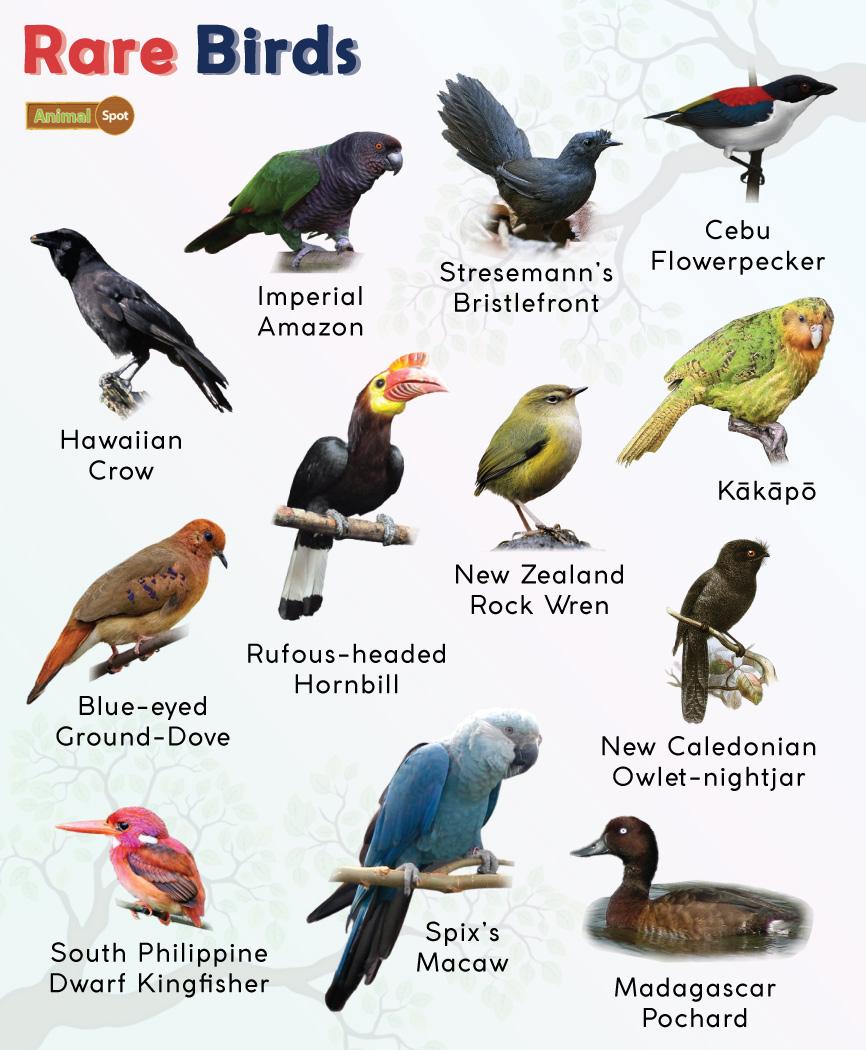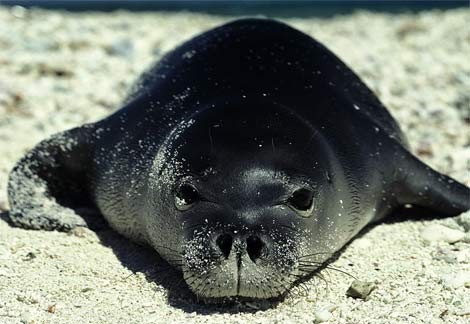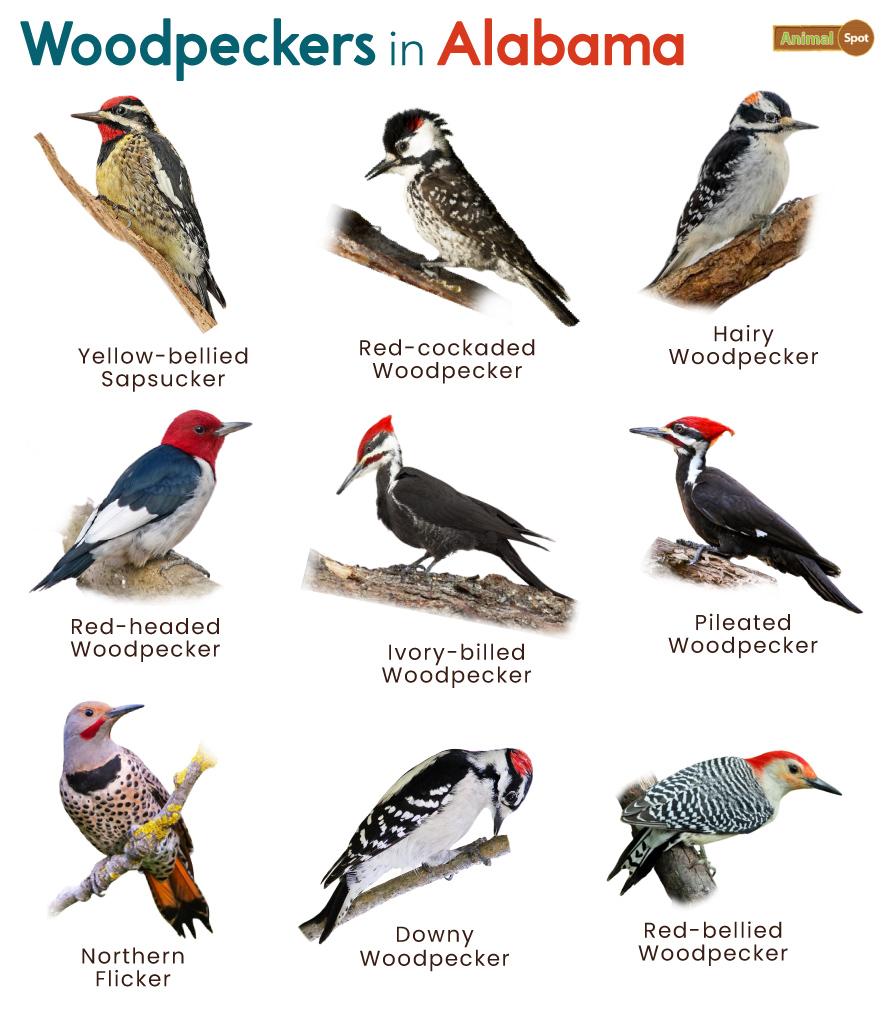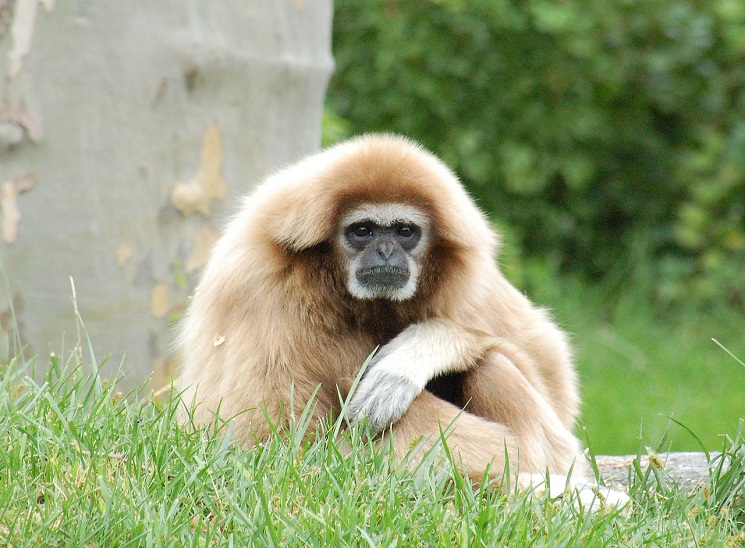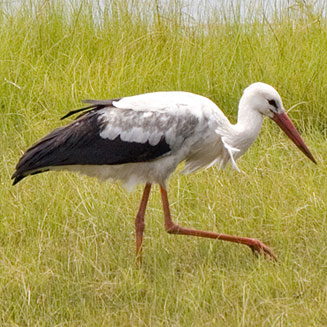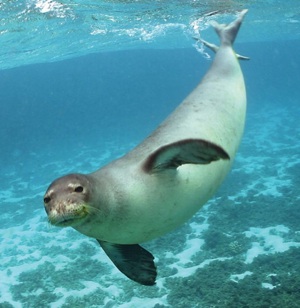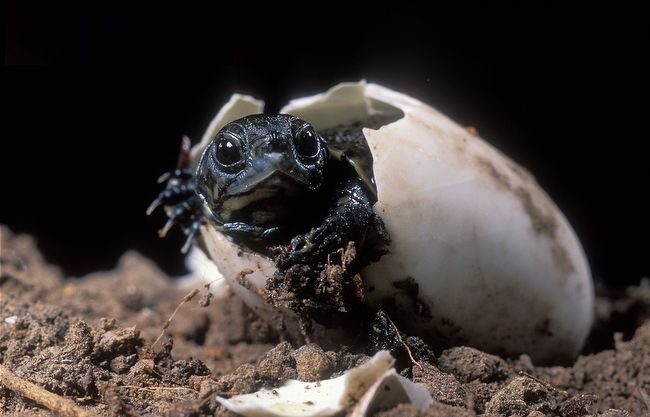| Great Auk | By 1844 | Bird | This big flightless sea bird inhabited the rocky islands surrounding the North Atlantic region. They had a length of around 30 inches, and their wings were short, helping them swim underwater. They fell prey to hunters who often killed them for food and bait. The last specimen of the great auk was possibly killed in 1844, which led to its complete extinction. |
| Steller’s Sea Cow | 1768 | Mammal | This sea cow gets its name after naturalist Georg Wilhelm Stellar, credited for discovering it in 1741. Unfortunately, it became extinct 27 years after being discovered, extensive hunting being the main culprit. |
| Tasmanian Tiger | 1930 | Mammal | The Tasmanian tiger isn’t a tiger but a carnivorous marsupial with the face of a medium-sized dog and dark stripes similar to a tiger. The last living species was caught in Tasmania in 1930. Habitat loss due to humans, hunting, and competition from wild dogs caused it to perish. |
| Passenger Pigeon | 1914 | Bird | It got its name from the French word ‘passager,’ translating to ‘passing by’ because of its migratory traits. At one point, 3-5 million passenger pigeons inhabited North America. They were a preferred game choice for Native Americans. However, after the Europeans arrived in the Americas, they were slaughtered even more than before for their meat. This, alongside deforestation, contributed to their eradication. The last specimen died in captivity in 1914. |
| Pyrenean Ibex | 2000 | Mammal | This mountain goat was big with thick, curved horns. Initially, their population was over 50,000. However, by the 20th century, their numbers had reduced drastically to 100. Celia, a female Pyrenean ibex, was the last specimen that died on the 6th of January in northern Spain. The exact reasons for their extinction are unknown, but poaching and competition from bigger mammals for food and habitat might be the reason. |
| Baiji Dolphin | Not seen since 2002. | Mammal | Endemic to China’s Yangtze River, the Baiji dolphin isn’t officially extinct but is assessed as Critically Endangered: Possibly extinct by the IUCN. Not even a single dolphin species was spotted for over 20 years. Qiqi, the last living baiji, died in 2002. |
| West African Black Rhinoceros | 2011 (Recent extinction) | Mammal | A subspecies of the black rhinoceros, it was once found in the savanna belt of sub-Saharan Africa. The last specimen was seen in 2006 in Cameroon. They fell victim to heavy poaching that caused their numbers to dwindle drastically – from 10 in 2000 to 5 in 2000, and then a complete extinction. |
| Splendid Poison Frog | 2020 (Recent extinction) | Amphibian | They became extinct relatively recently though the last splendid frog species was seen in 1992. Researchers speculate that a fungus outbreak in 1996 in their habitat resulted in extinction. They were once popular as pets, and there might be the possibility of living specimens in captivity. |
| Bramble Cay melomys | 2015 | Mammal | It gets its name after the tiny island, Bramble Cay, where it lived. Though IUCN declared it extinct in 2015, the confirmation from the Australian government came a little later, in 2019. The government of Queensland documented it as the first mammal to human-induced climate change. |
| Pinta Island Tortoise | 2012 | Mammal | Also known as the Pinta Giant tortoise is a subspecies of the well-known Galapagos tortoise species endemic to the Pinta Island of Ecuador. Most died from hunting; by the middle of the 20th century, none of the Pinta island tortoises were left. However, in 1971 a male Pinta named Lonesome George was discovered. With his death on the 24th of June 2012, the species went into extinction. |
| Alaotra Grebe | 2010 | Bird | Endemic to Lake Alaotra and Madagascar’s surrounding lakes, this grebe species fell prey to poaching and habitat destruction. The sighted species was the one in 1985; in 2010, it was declared extinct. |
| Spix’s Macaw | 2019 (Extinct in the Wild as per IUCN) | Bird | Spix’s Macaw, a native of Brazil, was last spotted in 2016 in the wild. However, in 2019 it became extinct. The illegal pet trade and habitat loss played a pivotal role in their extinction in the wild. In captivity, however, around 160 of them exist. |
| Moorean Viviparous Tree Snail | 2009 (Extinct in the Wild as per IUCN) | Invertebrate | These snails were endemic to the Moorea Island of French Polynesia. It made its way into the IUCN Red List of Threatened Species until 2009, after its extinction. Human activities became responsible for a reduction in their numbers. The rosy wolf snail was introduced in 1977 to control the African land snail that was a menace to crops. This attempt backfired, and the rosy snail preyed upon the African land snails and other native snails, including the tree snail. This led to its extinction in the Wild, though captive populations still exist. |
| Deepwater Cisco Fish | 1952 | Fish | They were one of the biggest fish of the Great Lakes measuring around 12 inches. Commercial fishing, competition from invasive species like the alewife, and predation by introduced species such as the sea lamprey led to its extinction. |
| Eurasian Aurochs | 1627 | Mammal | It is a big wild ox that once inhabited the steppes region of Central Asia, Siberia, and Europe. They were hunted for game and became extinct locally in several areas within their range. In 1564 as few as 38 animals remained; in 1627, the last auroch died in Poland. |
| Labrador Duck | 1878 | Bird | This sea duck of North America was always rare and was last sighted in New York’s Almira in 1878. Hunting, the decline in food sources, and the loss of habitat were the possible causes of their extinction. |
| Rocky Mountain Locust | 1902 | Insect | This extinct grasshopper species inhabited the western parts of the United States and Canada. They were considered an annoying pest to crops. Loss of habitat due to plowing and irrigation activities was responsible for their extinction. |
| Golden Toad | 1989 | Amphibian | Also known as orange toad due to its coloration, the Golden Toad was first described by American herpetologist Jay Savage in 1966. It was a native of the Monteverde province of Costa Rica. The last toad of this species, a male, was sighted on the 15th of May 1989, after which they went into extinction. |
| Indian Auroch | Before 13th century A.D | Mammal | This is an extinct subspecies and an ancestor of the zebu cattle. The skeletal remains in Uttar Pradesh show that these cattle lived around 1800 BC. |
| Poo-uli | 2019 | | Alternately called the black-faced honeycreeper, this passerine bird was endemic to Hawaii’s Maui Island. It was first identified in 1973 by college students. Then, it had a sparse population of just 20 birds. Efforts were made to capture and breed them in captivity but in vain. Out of the three birds discovered in 1998, one died in its captive habitat in 2004, and the other two weren’t sighted since then. Habit destruction, the rapid spread of mosquitoes that spread disease, and increased predators triggered their perishment. |
| Madeiran Large White | 1977 (Critically Endangered, possibly extinct assessed by the IUCN) | Insect | Arthur Gardiner Butler, English entomologist first described this species in 1886. They are possibly thought as extinct since no butterfly species was spotted after 1977. A 15-year survey conducted through the 1980s and 1990s yielded no positive results. |
| Carolina Conure | 1918 | Bird | Also called the Carolina parakeet, this parrot species had an appealing look because of its reddish-orange face, yellow head, and pale beak. There isn’t any specific cause for its extinction, though habitat loss due to deforestation and diseases are the probable reasons. Incas, the last Carolina parakeet, died in captivity in 1918. |
| Tecopa Pupfish | 1979 | Fish | Found along the hot springs of California’s Mojave Desert underwent a depletion in numbers. Finally, they went into extinction since their habitat was threatened. It was the first species to be removed from the Endangered Species Act of 1973. |
| Falkland Islands Wolf | 1876 | Mammal | They were the only land mammal living in the Falkland Islands. Excessive hunting was the leading cause of its extinction. |
| Javan Tiger | 2003 | Mammal | As its name suggests, the Javan tiger was found in Indonesia’s Java. In the 19th century, they occurred pretty commonly. However, by the 1950s, their population dwindled drastically, resulting in just 20 tigers. They were officially declared extinct in 2003. |
| Round Island Burrowing Boa | 1975 | Reptile | Native to Mauritius’ Round Island, these boas could also be found in large numbers in the surrounding islands. By 1949 they could rarely be seen. The conservationists last spotted them in 1975, after which they became extinct. |
| Dutch Alcon Blue Butterfly | | Insect | The Alcon blue butterfly’s subspecies these species were found in the Netherlands. It was always rare and ceased to exist in 1979. Wild thyme was a good food source for the larva. When there was a shortage of thyme, these butterflies disappeared eventually. |
| Schomburgk’s Deer | 1938 | Mammal | A native of central Thailand, this deer species went into extinction by 1938. When commercial rice production began in Thailand in the mid-19th century, the grasslands, and swamps where the deer inhabited got lost. They were even hunted extensively. All these factors led to their extinction. |
| Maui Akepa | 2021 | Bird | Endemic to the Hawaiian Islands, these birds have been considered Critically Endangered, possibly extinct by the IUCN. They were sighted for the last time in 1988. |
| Kaua’i ‘o‘o | 1987 | Bird | These birds are the last member of their genus and were endemic to the Kauaʻi Islands. Habitat destruction, mosquito-borne diseases, and the introduction of Polynesian rats and other predators resulted in their predation. |
| Sea Mink | 1894 | Mammal | These minks were sought-after by fur traders, which caused their numbers to decline. |

